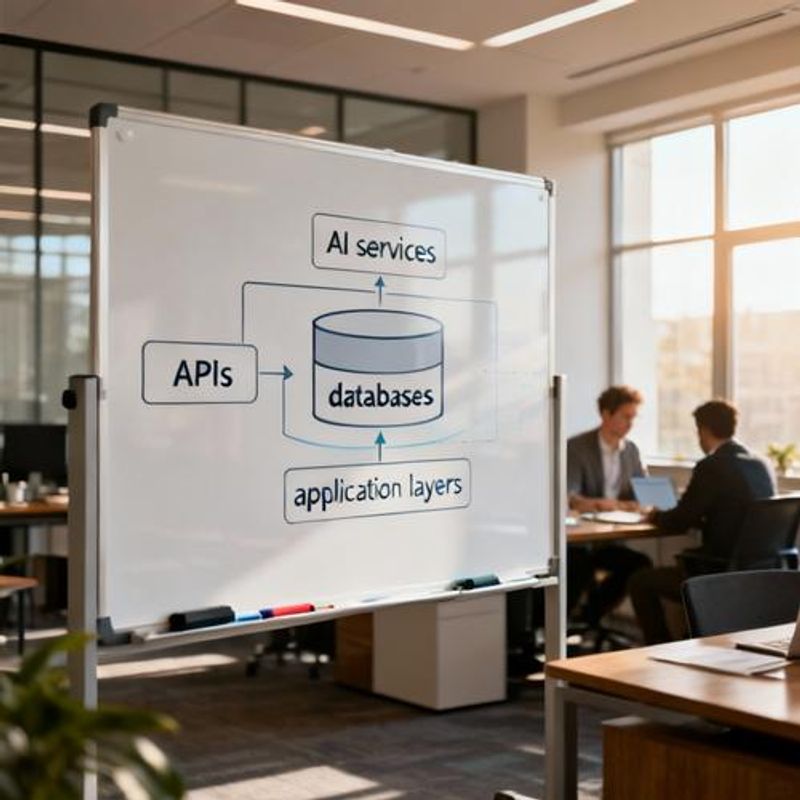AI Functionality Implementation Guide: A Programmer's Complete Roadmap to Building Intelligent Applications

Implementing AI functionality in your applications doesn't have to feel like navigating a black box. As a programmer, you face constant pressure to integrate intelligent features while maintaining code quality, performance, and deadlines. This comprehensive guide breaks down the complexity of AI implementation into actionable steps, helping you build robust AI-powered applications without getting lost in academic theory or marketing hype.

Why AI Functionality Matters for Modern Development
You're building applications in an environment where users expect intelligent behavior. Whether it's auto-completion, content recommendations, or data analysis, AI functionality has shifted from 'nice-to-have' to essential. The challenge isn't whether to implement AI—it's how to do it efficiently without overengineering or creating technical debt. Many developers struggle with choosing the right approach, integrating APIs effectively, and maintaining performance standards while adding AI capabilities to existing codebases.
Key Takeaways: Your AI Implementation Roadmap
Before diving into implementation details, here are the essential principles that will guide your AI functionality development:
- Start with API-based solutions before building custom models
- Design fallback mechanisms for AI service failures
- Implement proper data preprocessing and validation pipelines
- Monitor AI functionality performance and accuracy in production
- Plan for scaling and cost optimization from day one

Choosing Your AI Implementation Strategy
The first critical decision is selecting between API-based services, pre-trained models, or custom solutions. API services like OpenAI, Google Cloud AI, or AWS offer quick integration but require internet connectivity and ongoing costs. Pre-trained models provide more control and can run locally but need more infrastructure setup. Custom models give maximum flexibility but demand significant ML expertise and training time. For most applications, start with API services for rapid prototyping, then evaluate if the added complexity of other approaches justifies the benefits.
Building Robust Data Pipelines
AI functionality is only as good as your data pipeline. Implement validation layers that check data format, size limits, and content appropriateness before sending to AI services. Create preprocessing functions that standardize input formats—whether text cleaning, image resizing, or data normalization. Design your pipeline to handle batch processing for efficiency and implement caching mechanisms for repeated requests. Remember that garbage in equals garbage out, so invest time in robust data handling from the start.
Error Handling and Fallback Strategies
AI services fail—plan for it. Implement circuit breakers that temporarily disable AI functionality when services are unresponsive. Create meaningful fallback behaviors: if your recommendation engine fails, show popular items; if text analysis fails, use simple keyword matching. Set appropriate timeouts (typically 10-30 seconds for AI requests) and implement retry logic with exponential backoff. Always provide users with clear feedback when AI features are unavailable rather than showing cryptic error messages.
Code Examples and Implementation Templates
Here's a practical implementation pattern for integrating AI functionality: Create an AI service wrapper class that handles authentication, request formatting, and response parsing. Implement async/await patterns for non-blocking requests. Use dependency injection to make AI services swappable for testing. Structure your code with clear separation between business logic and AI integration logic. Design your AI response handling to be defensive—validate response structure, handle partial failures, and log unexpected responses for debugging.

Common Pitfalls and How to Avoid Them
Don't integrate AI functionality without proper testing environments that mirror production data. Avoid sending sensitive data to external AI services without reviewing privacy policies and implementing data anonymization. Never assume AI responses are always correct—implement confidence scoring and human review workflows for critical decisions. Don't ignore rate limits and cost implications—AI API costs can escalate quickly with high usage. Resist the temptation to over-engineer initially; start simple and iterate based on real usage patterns.
Next Steps: From Implementation to Production
Start by identifying one specific use case in your current project where AI functionality would add clear value. Build a minimal implementation using API services, focusing on proper error handling and data validation. Monitor performance and user interaction patterns, then iterate based on real feedback rather than assumptions. Consider exploring AI development tools and frameworks that can accelerate your implementation process while maintaining code quality standards.